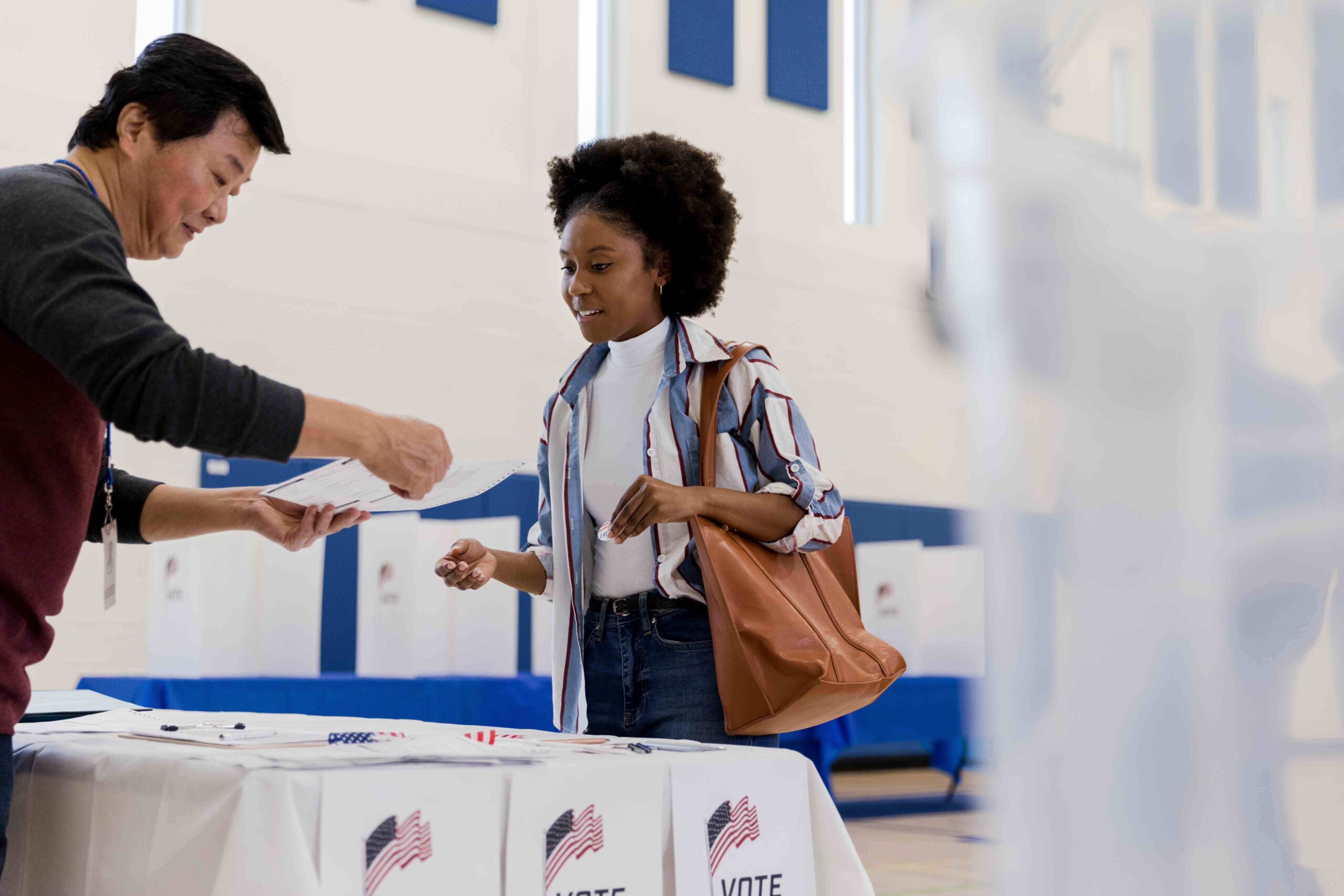How to Get on the Ballot: A Complete Guide for Candidates

In a democratic society, the ballot box is where change begins. However, getting your name on the ballot as a candidate is not a simple task. It requires careful planning, strategic decision-making, and a deep understanding of the electoral process.
This guide will explore the intricate process of attaining ballot access. Whether you’re an aspiring city council member or state representative or another elected official, these insights will help you get on the ballot, one of the first steps to launching a successful political campaign.
What Requirements Do You Need To Meet To Qualify for Ballot Access?
Qualifying for ballot access varies significantly depending on the jurisdiction and election level (local, state, federal) of the office you’re running for. However, all candidates will need to comply with certain ballot access laws to appear on an election ballot. These regulations may include:
- Age: Candidates must meet a minimum age requirement, which varies depending on the office sought. For instance, to run for President in the United States, a candidate must be at least 35 years old, while many other offices have lower age thresholds for prospective candidates.
- Residency: Candidates are usually required to be residents of the area they wish to represent for a specified period before the election. This requirement helps ensure that candidates have an understanding of and a vested interest in the community they aim to serve.
- Citizenship: For most political offices, candidates must be citizens of the country. Candidates running for Congress, for example, must have been U.S. citizens for at least seven years.
- Filing Fees: Some jurisdictions require candidates to pay a filing fee to get their name on the ballot. In some cases, candidates can substitute the filing fee with a certain number of petition signatures.
- Petitioning: Candidates sometimes need to collect a certain number of signatures from registered voters. The required number of signatures usually depends on the position being sought and sometimes must come from specific geographic areas or political subdivisions.
There are also other forms, such as a declaration of candidacy, ethics statement, and financial disclosure, that you will likely need to file to get on the ballot. Ensure you understand all these forms, their relevant submission deadlines, and what additional information or documents you may need to complete them.
Best Practices for Getting on the Ballot
Now that you understand what it takes to qualify for ballot access, you can begin taking steps to get on the ballot. As always, we recommend that you check with election authorities to ensure that you meet the requirements of your specific jurisdiction.
Build a Strong Platform to Run On
Before attempting to get on the ballot, create a campaign that stands out from the other contenders and gains the trust of the electorate.
To begin, identify the core values and principles that define your candidacy. Then, develop a clear and concise campaign message that encapsulates your vision for the community or office you seek to represent. Try to make your message relatable, authentic, and inspiring.
Voters will also want to know how you plan to address the challenges and concerns facing their community. Take a stance on these issues and back your viewpoints with evidence, facts, and practical solutions. Engage with potential voters, community leaders, and experts to refine your positions and ensure they reflect the needs of your constituency.
Then, communicate these core messages across various platforms, including social media, print, and email. Doing so will ensure that the electorate understands where you stand and what you plan to achieve. In turn, you can inspire them to sign a petition, volunteer, or donate to your campaign.
Organize a Canvassing Event
As previously mentioned, most candidates require a certain number of signatures to get on the ballot. A traditional method for collecting these signatures is door-to-door canvassing.
During a canvassing event, candidates or volunteers go door-to-door in the relevant district or area, speaking with potential voters and asking them to sign the petition or nomination papers. This method allows for direct engagement with voters and is often especially effective for local elections.
Take these steps to ensure your canvassing event is successful:
- Create a canvassing script. Develop a persuasive and concise script that volunteers can use when talking to residents. It should include key talking points, questions to engage residents, and guidance on how to respond to common inquiries or objections while maintaining a friendly and respectful tone.
- Map out strategic locations for signature collection. Analyze voter data to identify neighborhoods or areas within your jurisdiction where your campaign is likely to find individuals who are receptive to signing your petition. Map out the targeted areas, then divide them into manageable walk routes (commonly known as turfs) for your canvassing team.
- Recruit and train volunteers. Volunteers are the backbone of canvassing, so it’s crucial to recruit a sufficient number of motivated individuals to help you knock doors. Once you have your team, conduct training sessions to ensure everyone understands the ins and outs of canvassing and gathering petition signatures.
- Collect data. In addition to asking constituents for their signatures, gather other important data like their contact details and any specific issues or concerns they may have. This information will prove useful when planning your campaign and encouraging constituents to show up at the polls.
If your team is looking to streamline the process of collecting signatures, consider canvassing technology like MiniVAN. Campaign managers can create lists of targeted voters, assign volunteers specific areas to canvass, provide a script to follow, and teach them how to enter data back into your CRM directly within the app. Additionally, you can generate detailed reports and maps to optimize canvassing routes, helping campaigns measure and efficiently secure the necessary support to get on the ballot. If you plan to have large canvassing operations, consider using MiniVAN Manager to help ensure transparency and accountability among your volunteers and paid canvassers.
Gather Ballot Access Petition Signatures Elsewhere
In addition to conducting targeted outreach via canvassing, some campaigns find success in gathering petition signatures in areas with lots of foot traffic in your relevant jurisdiction. While you need to make sure you’re following relevant laws and guidelines about gathering signatures and ensuring those signing are eligible voters, this tactic can sometimes be an effective method to help boost your signature count. Make sure you have plenty of forms, clipboards, and pens in case you find multiple people who want to help you gain ballot access.
After people sign the form but before they leave, review the form to make sure they filled it out correctly. This quick review helps ensure a simple mistake won’t lead to their signature being rejected and prevents you from needing to find another signature to make up for it. Generally speaking, it’s best to gather more signatures than you think you need in case some are disqualified by the relevant election authority. It’s also a good idea to turn those signatures in early if you can in case you need to gather more signatures after the election authority reviews them.
Fundraise for Ballot Access
Some jurisdictions require a filing fee to get on the ballot, and there might also be costs associated with the petition process (like paying for clipboards, printing, extra help, and more). To keep costs down or pay for them entirely, organize fundraising activities specifically aimed at covering these expenses, making sure to:
- Create a compelling event or fundraising campaign. Design an event or develop a fundraising campaign that stands out by connecting the event to your campaign’s first steps toward victory in November’s theme to your campaign message. While your campaign launch will likely serve as the start of your event and fundraising activities, you may want to consider making another effort specifically to pay for your filing fees. Sometimes donors are driven to give because they recognize the impact of their donation (like helping you get on the ballot), so use this opportunity to your advantage! You may have some generous donors who will donate to cover part or all of the costs associated with getting on the ballot.
- Target the right audience for your event or fundraising campaign. If you decide to host a fundraising event, identify and invite individuals who are supportive of your candidacy and are likely to contribute to help you get on the ballot. Invite others who may be able to help you increase the fundraising potential of your event (like elected officials, community leaders, or other influential individuals). If you decide to create a fundraising campaign around getting on the ballot, appeal to your donors through multichannel outreach to increase your fundraising potential. By meeting donors where they are, you likely have a better chance of raising money compared to just using a single communication channel.
While fees to get on the ballot aren’t usually one of the largest expenses you’ll encounter in your campaign, the extra money you raise while fundraising to get on the ballot can be used for other campaign expenses if you raise more than expected. - Leverage multiple channels for your fundraising event or campaign. In addition to ticket sales, explore various channels to raise funds during the event or fundraising campaign. This could include a silent auction, merchandise sales, or a special appeal during the event or campaign where you ask attendees to pledge additional support. Make it easy for attendees to donate by providing online and in-person payment options.
Keep in mind that there are specific rules and regulations regarding political fundraising, donor disclosures, spending limits, and financial reporting. For instance, all candidates running for federal office must abide by the rules and regulations administered and enforced by the FEC. Review the requirements in your specific jurisdiction to ensure you remain compliant while raising money for your campaign.
Seek Legal Advice if Needed
The process of getting on the ballot can be complex and sometimes contentious. Don’t hesitate to seek legal advice or guidance, especially if you encounter ambiguous requirements or potential legal challenges. An election law attorney or consultant can provide valuable assistance in navigating the ballot access process.
While their advice comes at a cost, it will likely yield a positive return on investment by increasing your chances of successfully getting on the ballot, running a competitive campaign, and ultimately winning the election (without having to spend time debating if you were qualified to get on the ballot in the first place).
Beyond Getting on the Ballot
After submitting your required materials, which may include petition signatures, fees, and other documents, your relevant election authority will let you know if you met the qualifications to get on the ballot. However, ballot access is just the beginning of your campaign journey.
As you move toward your next campaign goal, NGP VAN can help. Our industry-leading organizing, fundraising, compliance, and digital software has helped elect thousands of candidates from the local level to the Presidency. Learn how we can help you win your race.



